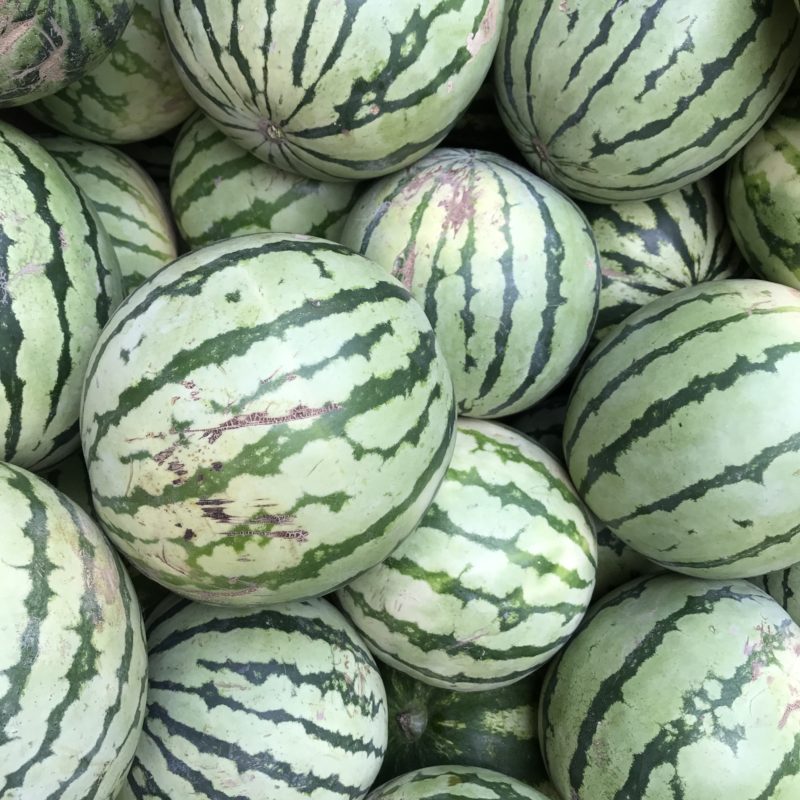About Watermelon
The watermelon is a member of the Cucurbitaceae family which includes cucumbers, melons, pumpkins and squash. Like many of its relatives, it is a sprawling vine. By weight, the watermelon is the most consumed melon in the United States, followed by cantaloupe and honeydew.
Watermelon is thought to have originated in southern Africa, where it is found growing wild. Evidence of its cultivation in the Nile Valley was found from the second millennium BC. By the 10th century AD, watermelons were being cultivated in China, which is today the world’s single largest watermelon producer. By the 13th century, Moorish invaders had introduced the fruit to Europe; according to John Mariani’s Dictionary of American Food and Drink, “watermelon” made its first appearance in an English dictionary in 1615. It is believed that the watermelon was introduced to the New World by the Spaniards in the 15th century.
Watermelons can be round, oblong or spherical in shape. They are typically light to dark green with white mottling stripes, but some varieties differ a lot from the norm: some varieties such as “Moon And Stars” are dark purple with golden spots. Their flesh is commonly bright red but some varieties have brown, orange, yellow, pink or even white flesh. Their core contains large black seeds. Seedless hybrid varieties tend to be less flavorful.
Few fruits are as cooling as watermelons on a hot summer day. Usually only the flesh is eaten while the rind is discarded. The rind is the whitish green part of the watermelon, between the skin and the flesh. The rind is richest in minerals and can juiced with the flesh, or it can be pickled or candied.
Nutritional Benefits
The watermelon has a very high water content (92%.) It is rich in beta-carotene, folic acid, vitamin C, vitamin B5 and smaller amounts of B1, B2, B3 and B6. It is also a rich source of minerals such as calcium, magnesium, phosphorus, potassium, sodium and smaller amounts of copper, iron and zinc. Like the tomato, the watermelon is rich in lycopene, the red carotenoid pigment that gives it its red color. This important anti-oxidant is powerful in neutralizing harmful free radicals in our body.
Health Benefits
Watermelon is very cleansing, alkalinizing, diuretic and mineralizing. It is very effective in promoting elimination of toxic wastes. The alkalinizing effect maintains the acid-alkaline balance in the body, neutralizing the toxic condition of the body resulting from excessive intake of acid-forming foods.
